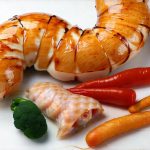Digestive disturbances can be incredibly disruptive to daily life, ranging from mild discomfort to debilitating pain. Often, after experiencing issues like bloating, diarrhea, constipation, or nausea – frequently triggered by infections, food intolerances, or stress – individuals understandably seek ways to soothe their systems and restore normal function. A low-fat diet is a common recommendation during this recovery period, but simply cutting fat isn’t always the answer; it’s about making thoughtful transitions that support healing rather than introducing new problems. The key lies in understanding why fat impacts digestion, what types of fats are more tolerable post-disturbance, and how to reintroduce foods gradually while monitoring your body’s response.
The digestive system is particularly vulnerable after a period of upset. Inflammation often plays a significant role, reducing the gut’s ability to efficiently process food. Fat, being more complex to digest than carbohydrates or proteins, places a greater burden on this already stressed system. This isn’t to say fat should be eliminated entirely – it’s an essential nutrient! However, temporarily reducing overall fat intake and focusing on easily digestible sources can provide significant relief while the gut heals. Furthermore, understanding your specific digestive trigger is paramount; what caused the disturbance in the first place will heavily influence long-term dietary choices beyond this initial transition. If you’re unsure about identifying triggers, reviewing checkpoints to review can be a helpful starting point.
Understanding Fat & Digestive Health
Fat digestion is a multi-stage process involving enzymes from the pancreas, bile from the liver, and the intestinal walls themselves. When the digestive system is compromised, any of these stages can be disrupted. For example, inflammation can reduce enzyme production or interfere with bile flow, making it harder to break down and absorb fats. This leads to symptoms like bloating, gas, and diarrhea as undigested fat passes through the intestines. Different types of fats are also processed differently; saturated and trans fats are generally more difficult to digest than unsaturated fats (monounsaturated and polyunsaturated).
Moreover, the quantity of fat consumed at one time matters significantly. Large amounts of fat overwhelm the system, even a healthy one. After a digestive disturbance, this capacity is further reduced. This explains why smaller, more frequent meals with lower fat content are often recommended during recovery. Focusing on foods naturally low in fat, or preparing familiar foods using lower-fat methods (baking instead of frying, for instance), can lessen the burden and allow your system to gradually regain its strength. The goal isn’t long-term deprivation but rather a strategic adjustment to support healing. If you find yourself struggling with digestion during dietary changes, exploring managing indigestion can provide helpful strategies.
A crucial aspect often overlooked is the gut microbiome’s role. Digestive disturbances can disrupt the delicate balance of bacteria in your gut, further hindering digestion and absorption. Certain fats – particularly those found in processed foods – can exacerbate this imbalance, while others (like omega-3 fatty acids) may have a protective effect. Therefore, choosing healthy fat sources as you reintroduce them is critical not only for immediate comfort but also for long-term gut health.
Reintroducing Fats Gradually
The process of adding fats back into your diet after a digestive disturbance should be deliberate and patient. Avoid rushing the process; listen carefully to your body’s cues. Here’s a step-by-step approach:
- Start with Easily Digestible Fats: Begin with small amounts of monounsaturated fats, like those found in avocado (in very small portions initially), olive oil, or nut butters (again, small quantities). These are generally easier on the system than saturated and trans fats.
- Introduce One Food at a Time: Don’t try to reintroduce multiple fatty foods simultaneously. This makes it difficult to identify which one might be causing problems. Wait 2-3 days between introducing new fatty foods.
- Monitor Your Symptoms: Pay close attention to how your body responds after each introduction. Look for signs of bloating, gas, diarrhea, or discomfort. If symptoms reappear, reduce the amount or eliminate the food altogether.
- Increase Portions Slowly: As you tolerate small amounts, gradually increase the portion size. Don’t push it – if you experience any distress, revert to a smaller amount.
It’s important to remember that individual tolerance varies considerably. What one person can easily digest, another may struggle with. There is no universal timeline for reintroduction; your body will dictate how quickly or slowly the process should proceed. Keeping a food diary can be incredibly helpful in identifying trigger foods and tracking your progress. A good starting point could also be building a safe menu to help guide reintroduction.
Choosing The Right Types of Fats
Not all fats are created equal – this is particularly important during recovery from digestive issues. Prioritize unsaturated fats, which are generally easier to digest and offer health benefits beyond just providing energy.
- Monounsaturated Fats: Found in olive oil, avocados, nuts (almonds, cashews), and seeds (pumpkin, sesame). These are often well-tolerated even during sensitive periods.
- Polyunsaturated Fats: Include omega-3 and omega-6 fatty acids. Omega-3s, found in fatty fish (salmon, mackerel – reintroduced cautiously after initial healing), flaxseeds, and chia seeds, have anti-inflammatory properties that can be particularly beneficial.
- Avoid Trans Fats: Found in many processed foods, fried foods, and baked goods. These offer no nutritional value and can exacerbate digestive problems.
- Limit Saturated Fats: While not inherently bad, saturated fats (found in red meat, full-fat dairy) are harder to digest and should be consumed in moderation, especially during recovery.
Focus on whole food sources of fat rather than processed or refined oils. For example, choosing avocado over margarine provides additional nutrients and fiber that support digestive health. Also, consider the cooking method; baking, steaming, or grilling are preferable to frying, which adds excessive fat and can further irritate the system. If constipation is a concern, especially after transitioning to new dietary patterns, addressing it promptly is important.
Beyond Diet: Supporting Digestive Healing
A low-fat diet is just one piece of the puzzle when it comes to recovering from a digestive disturbance. Several other factors play crucial roles in promoting healing and restoring normal function.
- Hydration: Adequate fluid intake is essential for all aspects of digestion, helping to soften stool and prevent constipation. Drink plenty of water throughout the day.
- Fiber Intake: Gradually increase fiber intake as you tolerate it. Fiber helps regulate bowel movements and supports a healthy gut microbiome. Start with easily digestible sources like cooked vegetables and oatmeal.
- Probiotics & Prebiotics: Probiotic-rich foods (yogurt, kefir – if tolerated) can help restore the balance of bacteria in your gut. Prebiotics (found in garlic, onions, bananas) provide food for these beneficial bacteria.
- Stress Management: Stress can significantly impact digestion. Practice relaxation techniques like deep breathing, meditation, or yoga to reduce stress levels.
- Mindful Eating: Pay attention to your body’s signals and eat slowly without distractions. This helps you recognize when you’re full and avoid overeating.
It is crucial to remember that this information is intended for general knowledge and informational purposes only, and does not constitute medical advice. If you are experiencing a persistent or severe digestive disturbance, it is essential to consult with a healthcare professional for proper diagnosis and personalized treatment plan. They can help identify the underlying cause of your symptoms and recommend the most appropriate course of action. Tips for returning to normal eating can also provide guidance during recovery.


















